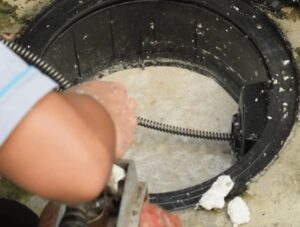When it comes to smooth and precise movement in machines, Linear guide rail & carriage assemblies play a major role. If you’ve ever wondered how heavy equipment slides so easily or how automated machines achieve such accuracy, the answer often lies in these tiny yet powerful components.
Think of them as the “tracks and wheels” of the mechanical world. Just like how a train runs smoothly along its tracks, linear guide rails allow machinery parts to glide with little resistance. Whether it’s a factory robot, a 3D printer, or a medical device, these assemblies are quietly making movements precise and efficient.
Let’s dive deeper to understand how they work, where they’re used, and why they’re important.
What Exactly Are Linear Guide Rail & Carriage Assemblies?
A linear guide rail & carriage assembly is made up of two key parts:
-
The rail – A hardened, precision-engineered track that provides the guiding surface.
-
The carriage (or block) – A moving part that rides on the rail with the help of rolling elements like balls or rollers.
This combination creates a system where loads can move in a straight line smoothly, with minimal friction.
If you picture sliding a heavy book across a table, it drags and requires effort. But if you place the book on small rollers or wheels, suddenly it glides with ease. That’s exactly what happens inside a linear guide assembly—tiny rolling elements reduce friction and make motion smoother.
Why Use Linear Guide Rail & Carriage Assemblies?
There are many reasons why engineers and designers choose this system:
High precision – Perfect for equipment that requires accuracy, such as CNC machines or measuring tools.
Smooth movement – Reduces jerky motions, allowing for controlled and reliable travel.
Durability – Designed to handle heavy loads while maintaining efficiency.
Efficiency – Less energy wasted on overcoming friction.
Without linear guide rails, many of the machines we use daily would either move roughly or wear out quickly.
Linear Guide Bushing vs. Rail & Carriage Systems
You may also hear about a linear guide bushing, which is another common motion system. It’s different from rail-and-carriage assemblies in a few ways:
A linear guide bushing typically slides on a shaft and is often used in lighter-duty applications.
A rail & carriage assembly can handle much higher loads and provides superior accuracy.
Bushings are usually more compact, while rails cover larger machines and longer movements.
Think of it like this: If you just need a drawer to slide open in your desk, a bushing might do. But if you’re designing a heavy-duty cutting machine, rails and carriages are the way to go.
Where Are Linear Guide Rail & Carriage Assemblies Used?
You might be surprised at just how many industries rely on them every day. Common applications include:
Manufacturing machines – CNC machines, milling machines, and lathes.
Automation systems – Robots and pick-and-place equipment.
Medical technology – MRI machines, scanners, and surgical equipment.
3D printing and electronics – Printers, plotters, and circuit board machines.
Packaging and assembly lines – Smooth movement is essential for speed and accuracy.
In simple terms, wherever there’s a need for precise, straight-line motion, you’ll likely find linear guide rails at work.
How to Choose the Right Linear Guide System
If you’re considering one for your project or machine, here are a few key factors to keep in mind:
Load capacity – How heavy is the item that needs to move?
Precision level – Do you need micrometer accuracy, or just smooth sliding?
Operating environment – Dusty, wet, or cleanroom? Each requires different coatings or seals.
Speed and travel distance – Long, fast movements need stronger designs.
Maintenance needs – Some designs require regular lubrication, while others are low-maintenance.
Choosing the right system is like picking the right tires for your car—you want them suited to the weight, speed, and terrain.
Advantages of Linear Guide Bushing Systems
While linear guide rail & carriage assemblies are excellent, bushings also have their advantages:
-
Simpler installation.
-
Lower cost for small-scale applications.
-
Compact size, perfect for limited spaces.
-
Adequate for light-duty movements like office equipment.
Both systems serve different needs, and the best choice depends on your project.
Tips for Maintaining Linear Guide Systems
Like any mechanical system, proper care extends its lifespan. Here’s how to keep them running smoothly:
Regular lubrication – Helps reduce wear and tear.
Keep them clean – Dust and debris can cause friction and reduce accuracy.
Check for wear – Inspect the rails and carriage for scratches or rough spots.
Avoid overload – Don’t exceed the designed load capacity.
Proper alignment – Misalignment can shorten the life of the system.
Think of it like caring for your bicycle chain—clean it, oil it, and don’t overload it, and it’ll run smoothly for years.
Real-Life Relatable Example
Imagine you’re setting up a sliding door in your home. If you simply place the door on the floor and try to push it, it’s heavy and hard to move. But once you install rails and rollers, suddenly the door glides effortlessly.
That’s essentially what linear guide rail & carriage assemblies do for machines—turning difficult movement into effortless precision.
Future of Linear Guide Technology
With technology advancing rapidly, these systems are also evolving. Some of the trends include:
-
Self-lubricating designs – Reducing the need for frequent maintenance.
-
Miniaturized systems – Perfect for electronics and compact devices.
-
Higher load capacities – Supporting even larger industrial machines.
-
Smart sensors – Allowing predictive maintenance by detecting early wear signs.
As industries demand faster, more accurate, and more reliable motion systems, linear guide technology will only continue to grow.
Final Thoughts
Linear guide rail & carriage assemblies may not be the most glamorous parts of a machine, but they are vital to keeping industries moving with accuracy and efficiency. Whether paired with a linear guide bushing or used on their own, they bring unmatched precision and reliability.
The next time you see a robot arm moving with flawless grace or a 3D printer crafting layer by layer, remember—it’s the silent work of these little assemblies making it possible.




More Stories
Keep Your Restaurant Running: The Complete Guide to Expert Grease Trap Cleaning and Pumping
Craft Beer Strategies to Build Loyalty and Brand Power
How to Find a Reliable Electrician Near Me in Santa Monica and Los Angeles